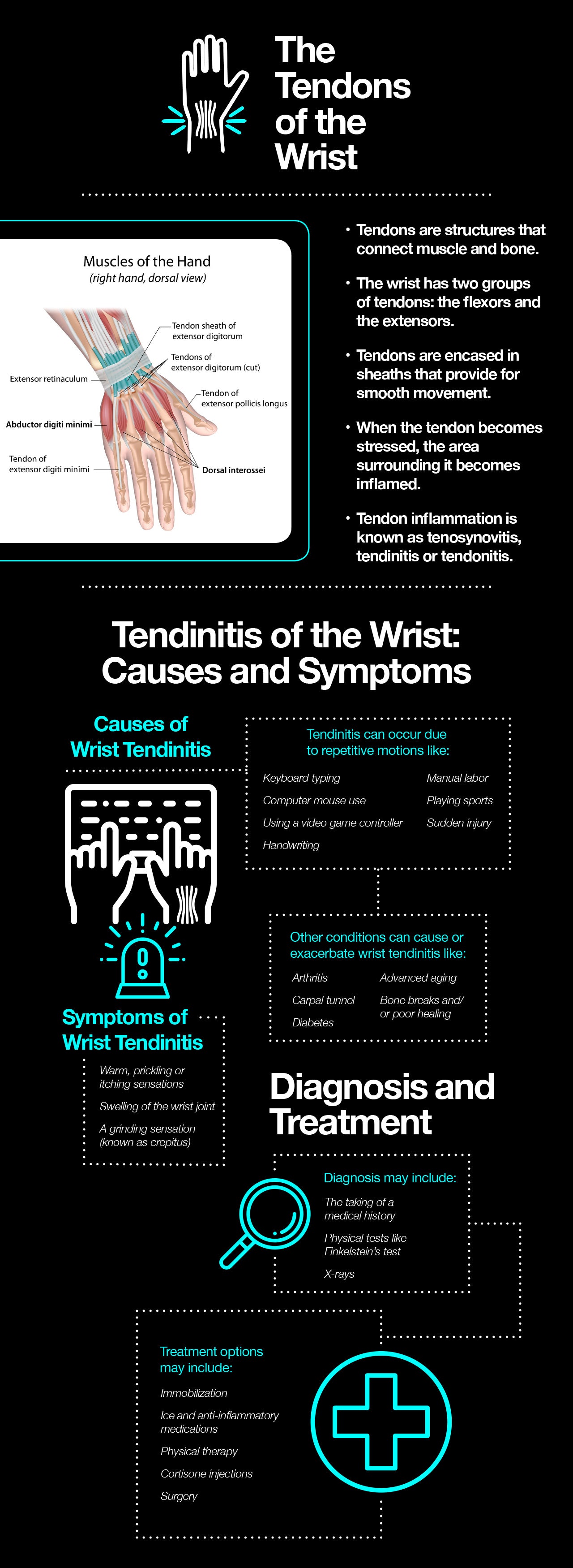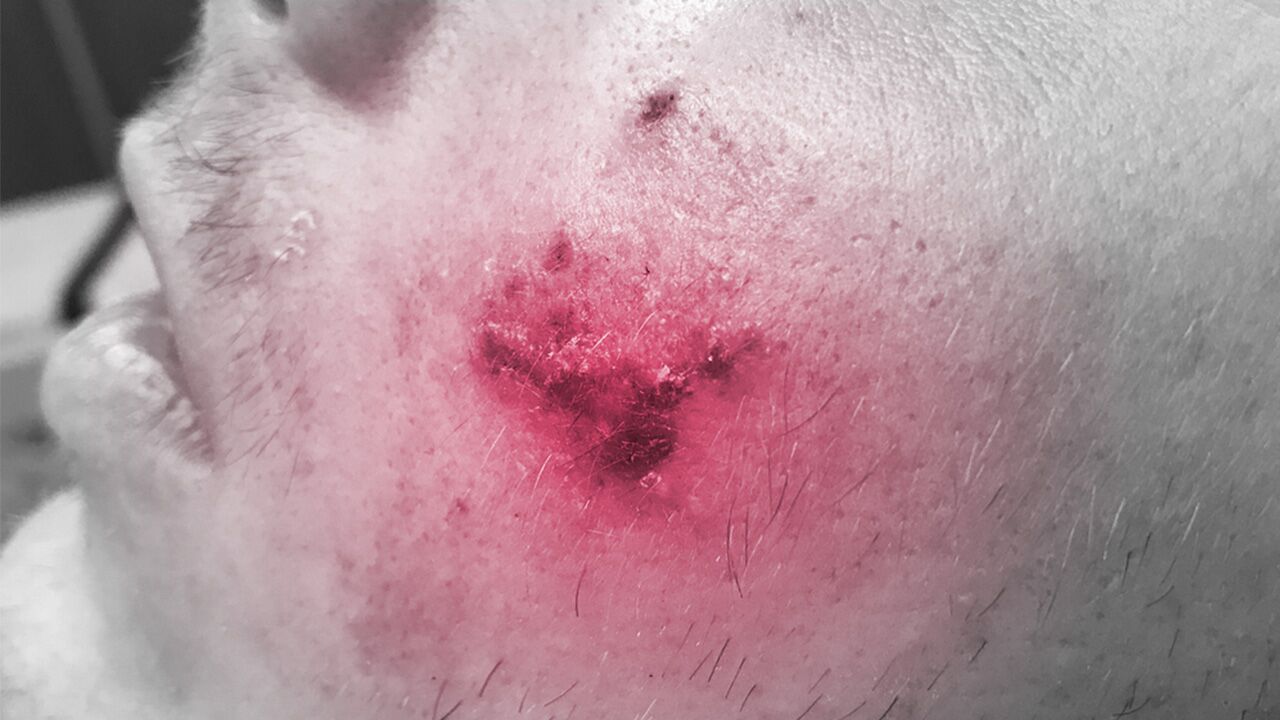Tendinitis of the Wrist: Causes, Symptoms and Solutions
 By: by Amino Science
By: by Amino Science

The suffix “itis” means “inflammation,” and tendinitis (also known as tendinopathy or spelled as tendonitis) is characterized by inflammation of the tendon, be that tendon in the ankle, elbow (tennis elbow), bicep, rotator cuff, or wrist. The condition can be caused by rheumatic disease, infection, or overuse. Tendinitis of the wrist is also known as wrist tenosynovitis, and it can severely hamper your range of motion, causing discomfort, injury, and pain. This article details the causes of wrist tendonitis, and what can be done to relieve the condition.
The Tendons of the Wrist
There are many tendons involved in the wrist joint and the movements of our hands and fingers, and wrist tendinitis can affect any one of them, and sometimes even two or more at once.
Tendons are structures that connect muscle and bone, and the ones in the wrist connect our forearm muscles to the bones in our fingers and hands, allowing for their movement.
These tendons are encased in tendon sheaths that provide a low-friction passage for the tendon through the wrist, sort of how a pipe cleaner moves through a straw. These tendon sheaths have a lubricating fluid known as synovial fluid (found in many of our joints) that also keeps the movements of our hands running smoothly. When this area becomes inflamed, tendinitis develops.
There are two groups of tendons in the wrist: those on the front (the flexors) and those on the back (the extensors). Often tendonitis occurs in areas where the tendons cross over one another, or in spots where they are laid over bony protuberances. While any of these tendons can become inflamed, most cases of tendinitis of the wrist occur in specific spots due to their placement in our anatomy as well as certain common repetitive movements (like typing).
However, tendinitis can also be caused by an infection, other medical conditions like gout or pseudogout, or by an autoimmune disease like rheumatoid arthritis. Tendinitis of the wrist can be mild or severe, and chronic inflammatory damage is known as tendinosis. Depending on the cause, the treatment may change as well. Read on to find out the symptoms and solutions for wrist tendinitis.
Tendinitis of Wrist: Causes and Symptoms
Tendinitis can occur in otherwise healthy individuals due to repetitive motions like:
- Keyboard typing
- Computer mouse use
- Using a video game controller
- Handwriting
- Manual labor (factory work, construction, etc.)
- Playing sports (anything involving the wrist, from baseball to bowling)
- Sudden injury (like landing badly due to a fall, car accident, sports injury etc.)
Conditions that can cause or exacerbate wrist tendinitis include:
- Arthritis
- Carpal tunnel
- Diabetes
- Advanced aging
- Bone breaks and/or poor healing
While arthritis can cause wrist tendinitis, they are not the same condition, and neither is carpal tunnel of the wrist. Arthritis is joint inflammation, carpal tunnel is a compressed nerve, and tendinitis is tendon inflammation. They may come together and influence one another, but each condition is distinct.
The first and most noticeable symptom of tendonitis is a pain in the wrist, and it may be accompanied by:
- Warm, prickling, or itching sensations in the tendons
- Swelling of the wrist joint and surrounding area
- A grinding sensation (known as crepitus) accompanying the movement of the tendons
The wrist may experience stiffness, which is often most notable in the mornings after you wake. Finding the underlying cause is the first order of business, as that will inform which type of therapy is your best solution.

Tendinitis of Wrist: Diagnosis and Treatment
It's recommended that you seek trusted medical advice to determine the cause of your wrist pain and develop a treatment plan. Diagnosing your wrist pain may involve a medical history intake, certain physical tests to determine the exact location of the pain and the specific tendons affected, or even X-rays if arthritis or a fracture is suspected.
As an example, one form of wrist tendinitis is known as De Quervain's tenosynovitis and is characterized by inflammation that occurs on the thumb side of the wrist, right at the base of the thumb. The Finkelstein's test requires patients to bend their thumb across their palm, fold their fingers down over the thumb, and then bend their wrist towards the little finger. If this motion causes pain in the tendon below the thumb, the patient likely has De Quervain's tendonitis.
Here are possible treatment options you may be presented with after diagnosis.
- Immobilization: If the cause of your tendinitis is repetitive movement or injury, the first line of treatment may be to place the wrist in a splint or cast to prevent further injury or irritation.
- Ice and anti-inflammatory medications: To reduce the pain caused by inflammation, applying an ice pack to the wrist and the use of over-the-counter anti-inflammatories like ibuprofen may be recommended (along with rest) to reduce the swelling of the soft tissues in the area.
- Physical therapy: A patient may be taught certain stretches or referred to a physical therapist to help strengthen their wrist and retrain its movements to avoid reinjury.
- Cortisone injections: Cortisone is an anti-inflammatory steroid treatment option injected into the wrist. While it's a safe short-term treatment, it may come with side effects of tendon weakening if it is relied on too regularly.
- Surgery: The most extreme method of treatment, surgery may be performed if all other treatment methods fail, and may involve removing surrounding wrist tissue to allow the tendon more room to move. If undergoing tendinitis surgery, consider supplementing with Heal, an amino acid nutritional therapy proven to help accelerate recovery and support a healthy inflammation response.
Treat Tendinitis Tenderly
Our wrists are complex and delicate, full of many small moving parts. On one hand, they're an absolute symphony of evolutionary precision, but on the other any number of small issues could leave our hands debilitated.
If the underlying cause of your wrist pain is repetitive motions, the best way to prevent future flare-ups is to modify the behavior (get an ergonomic desk arrangement) or protect your wrist (wear a splint while sporting). Likewise you may want to modify the way you lift heavy items or the way you perform your grip, and learn to stretch the appropriate tendons so they're less likely to get twinged.
Over-the-counter drugs and ice packs may be helpful to keep on hand, but it's recommended that you treat the cause and not just the symptoms and seek medical advice if those symptoms keep returning. Repeated reinjury of the wrist could start to compound and lead to severe and disabling results. The health of your wrists is literally in your hands, so take good care of them!

Up to 25% off Amino
Shop NowTAGS: conditions
Join the Community
Comments (0)
Most Craveable Recipes




 833-264-6620
833-264-6620



















